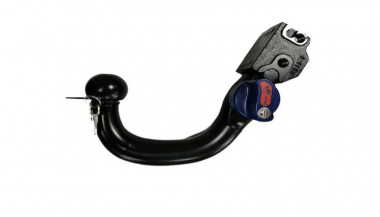In the modern age of technology, where smartphones dominate our lives, it’s easy to overlook the small yet significant gadgets we use daily—like car keys. What was once a simple metal tool has now transformed into a sophisticated device, integrating technology, convenience, and security. But how did we get here? And what surprising secrets do car keys hold? This journey into the secret life of car keys will reveal their evolution, innovative features, and potential future.
From Metal to Smart: A Brief History of Car Keys
The history of car keys is a fascinating reflection of automotive innovation. In the early 20th century, cars relied on simple ignition switches, but by the 1940s, car keys became standard. These were basic metal tools designed to operate mechanical locks and ignitions.
The 1980s marked a significant milestone with the introduction of remote keyless entry systems. Suddenly, unlocking a car was as simple as pressing a button, a feature that quickly became a standard in most vehicles. By the early 2000s, car keys had evolved into smart keys, incorporating technology that allowed keyless ignition and enhanced security. These advancements weren’t just about convenience—they were a response to rising concerns about car theft.
Today, digital car keys take innovation even further. Some manufacturers now allow drivers to unlock and start their vehicles using smartphone apps, integrating biometric authentication for added security. This evolution highlights how far we’ve come from the humble metal key.
Hidden Features: What Your Car Key Can Do
Modern car keys are more than just tools for unlocking and starting your car—they’re packed with features that many drivers don’t even realize exist.
- Panic Button: Most car key fobs have a panic button, which emits a loud alarm to deter potential threats or help locate your car in a crowded area.
- Remote Start: Certain keys allow you to start your car from a distance, a lifesaver in extreme weather conditions.
- Window Control: Some key fobs can roll your windows up or down remotely, perfect for venting a hot car before stepping inside.
- Valet Mode: This feature limits the speed and access to certain compartments when you hand over your keys, enhancing security.
These features reflect how car keys have grown beyond their traditional roles, becoming integral to the driving experience.
Car Keys Across the Globe: Different Innovations, Same Purpose
Car key technology isn’t uniform—it varies across regions, catering to different needs and preferences.
- Asia: In countries like Japan and South Korea, biometric car keys are becoming the norm. Fingerprint or facial recognition ensures that only authorized users can access the car.
- Europe: European car manufacturers emphasize eco-friendly designs, often using recycled materials in key fobs.
- North America: Remote start and smartphone integration are popular features, reflecting the region’s focus on convenience.
These regional differences underline how car keys adapt to meet the diverse demands of global markets.
Challenges with Modern Car Keys
While advanced car keys offer unparalleled convenience, they’re not without drawbacks.
High Replacement Costs: Losing a smart key can be expensive, with replacements costing hundreds of dollars due to programming requirements.
Security Risks: Keyless entry systems can be vulnerable to relay attacks, where thieves intercept and amplify the key’s signal to gain access to the car.
Battery Dependency: Smart keys rely on batteries, and a dead battery can leave drivers stranded.
To address these challenges, drivers are encouraged to keep spare keys, invest in signal-blocking pouches, and regularly check key fob batteries.
The Future of Car Keys
As technology advances, the future of car keys looks exciting. Biometric keys are expected to become mainstream, offering unmatched security through fingerprint or retina scanning. Additionally, digital keys, which allow drivers to control their vehicles entirely through smartphones, are gaining traction.
In the coming years, sustainability will likely play a bigger role. Manufacturers are exploring ways to make key fobs more environmentally friendly, such as using biodegradable materials or incorporating solar charging for battery-free operation.
These innovations signal a future where car keys become even more sophisticated, secure, and eco-conscious.
Why Car Keys Matter More Than You Think
Car keys are small devices with big responsibilities. Beyond their practical use, they symbolize how technology can integrate seamlessly into our lives. Understanding their features and potential can help you make informed decisions, whether it’s upgrading to a smart key or taking precautions to protect your investment.
Pro Tips for Car Key Maintenance:
- Keep a Spare Key: Always have a backup in case of loss or damage.
- Check Battery Life: Replace key fob batteries regularly to ensure consistent performance.
- Use Protective Covers: These prevent wear and tear, especially in extreme weather conditions.
By caring for your car keys, you ensure their longevity and reliability, saving you from unexpected hassles.
More Than Just a Key
Car keys have evolved from simple metal tools into complex devices that enhance security, convenience, and connectivity. As technology continues to advance, their role in our daily lives will only grow. By understanding their capabilities and challenges, you can fully appreciate the innovation behind these essential tools.
The next time you hold your car key, take a moment to think about its journey—from the past to the future, it’s a small device with a story as dynamic as the automotive industry itself.

_1736339090.jpg)
 (1)_1736344531.jpg)


 (1)_1744638022.jpg)